Dakar is the largest city in Senegal, and also the country’s capital. Most of the overlanding crowd, however, associates the word “Dakar” with an insane off-road vehicle speed race—or with a fraction less hyperbole, the world’s toughest motorsport challenge.
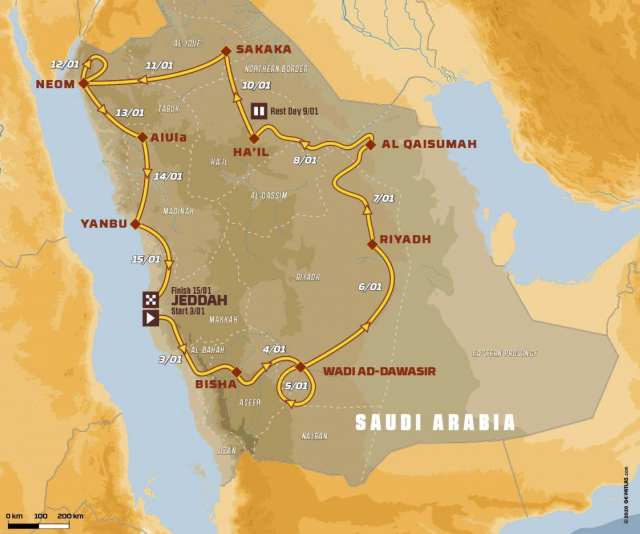
Dakar Rally 2021 route. Photo: Dakar website.
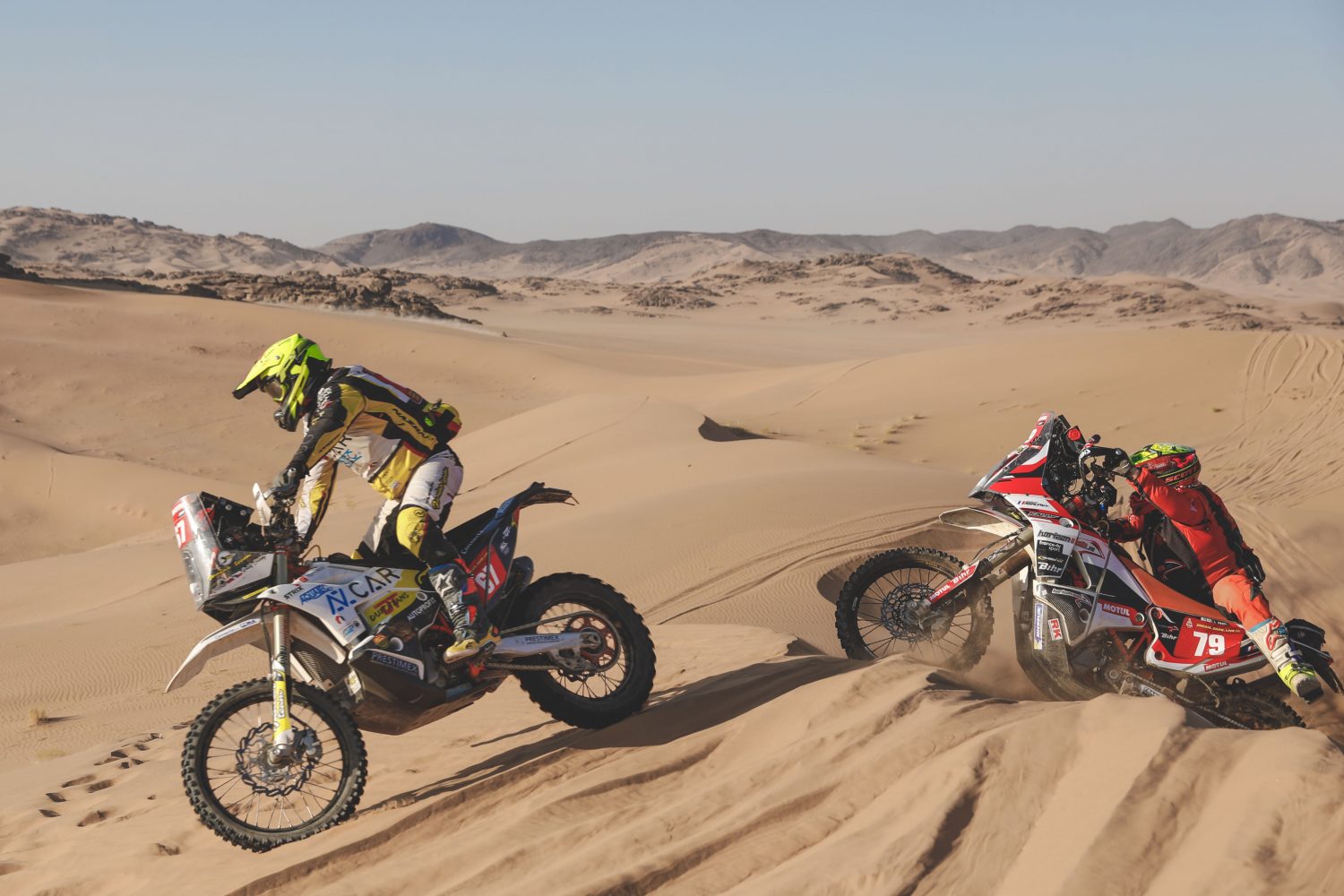
Photo: Justin W. Coffey
Founded in 1977, the race, originally called the Paris-Dakar Rally, staged from Paris, France across the Sahara Desert to Dakar, Senegal in West Africa and ran in that location until 2008, when the race had to be canceled due to threats in Mauritania. Moving over to South America from 2009-2019, the Dakar was staged in various points on the continent until disagreements with the South American governments forced the Dakar organizers to find a new spot.
In 2020, newly-appointed Dakar Rally director, David Castera, moved the race to Saudi Arabia, where it will again be held in 2021. The race is open to amateurs and professionals, who likely don’t get to appreciate much of the incredible moonscape scenery whizzing past: orange sand dunes, blue skies, camels, rocks— it’s a little tough to peace out when you’re trying to catch and pass whoever’s in front of you. Even if you’re in first place already, there’s no time to peel your eyes off your line.
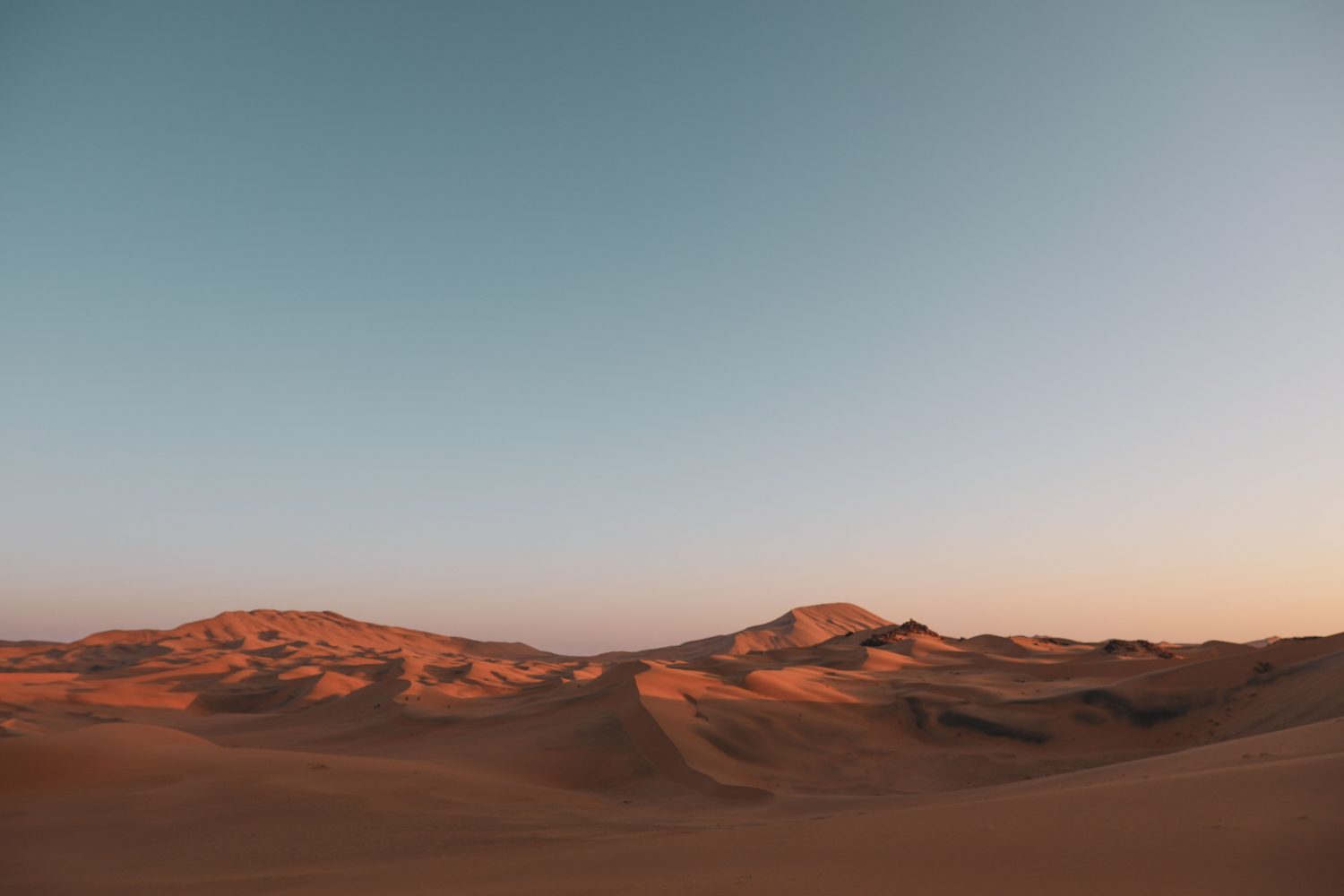
Photo: Justin W. Coffey
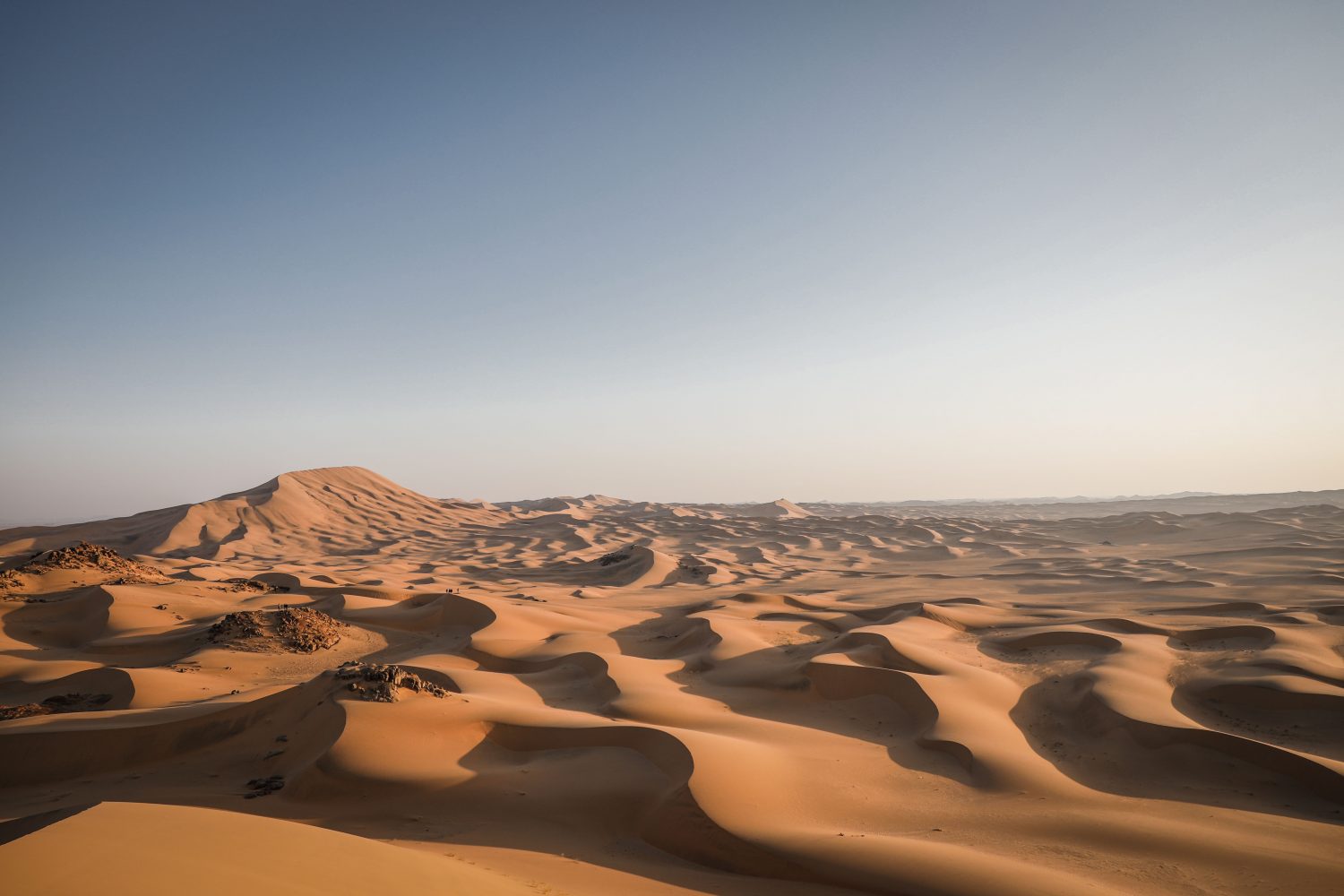
Photo: Justin W. Coffey
During the Dakar Rally (this year, January 2-16), this arid, remote landscape turns into a testing ground for men and women against machines. Yes, women. Meet this year’s female competitors here. I’m partial to the moto category, where there are four fantastic females: Laia Sanz (Spain), Sara Garcia (Spain), Sara Jugla (France), and Audrey Rossat (France). Of this a few things are clear: Spain and France build some tough folks, and if your name is Sara, even better.

Photo: Dakar website.
The encouragement and inspiration for female racers to join the Dakar Rally may have had a lot to do with Germany’s Jutta Kleinschmidt. She won the Ladies Trophy for the Paris-Dakar rally in 1992. In 2001, Jutta switched from motorcycles to cars and then again became the first woman to win the overall Dakar Rally classification, earning herself the title of “most successful female rally driver ever.”
At just a hair over 4,750 miles from Jeddah to Qiddiya, the Dakar is 14 days of physical and mental taxation. Day one eases racers into the rally with a seven-mile course, but after that, it’s full-on race mode. Aside from one rest day at the halfway point, competitors average 300 jarring miles per day. Difficult doesn’t begin to describe the terrain: sand dunes, rocks, mud, heat, and wind are all in a day’s work.
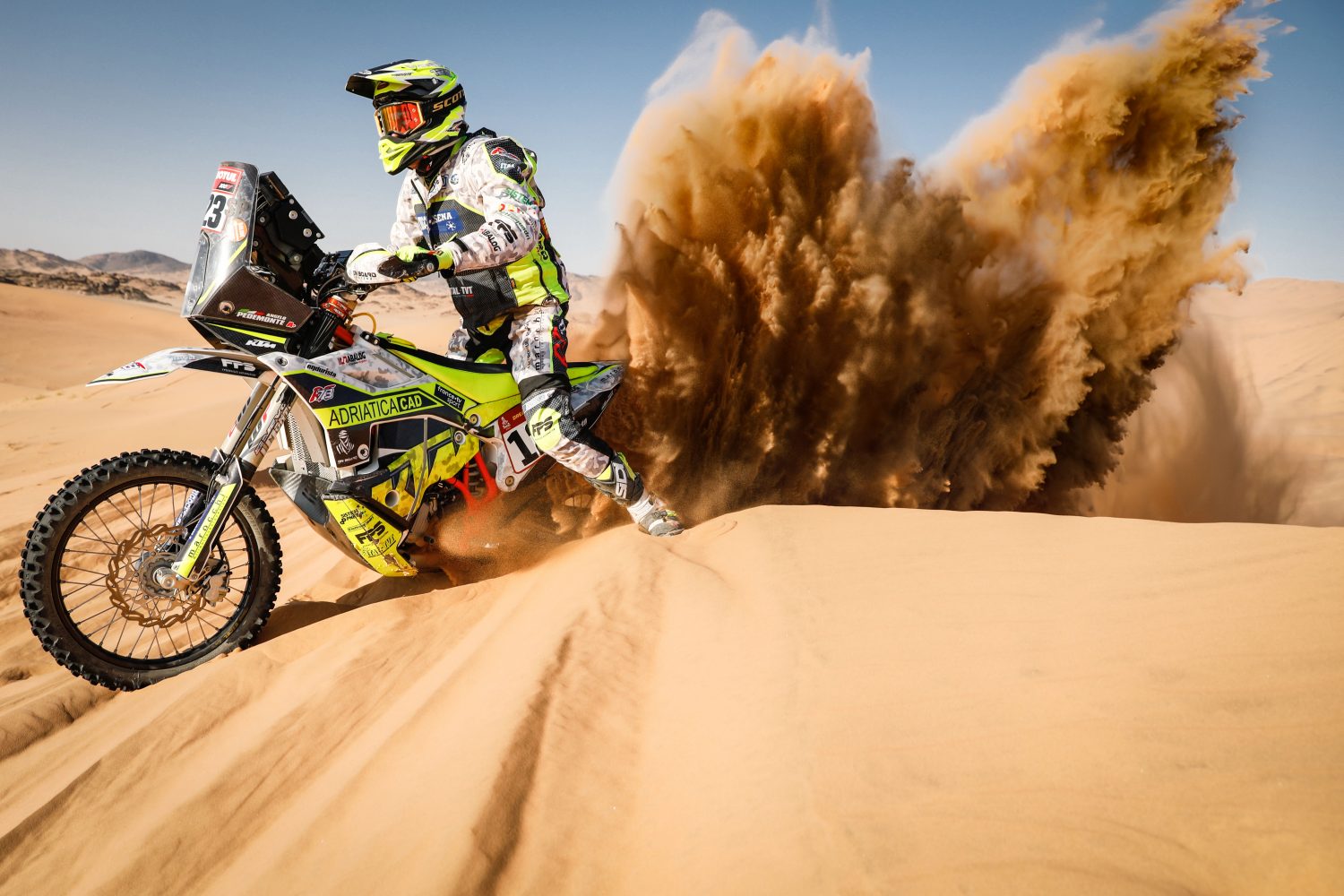
Photo: Justin W. Coffey
I’ve no idea what it feels like to launch off a sand dune in a Unimog, but I do have some idea of what bike riders are going through. They, in my opinion, have more challenges than any other type of competitor. There’s no co-pilot next to you reading off the roadbook directions; you’re looking down at your navigation reel while trying to keep balanced on two wheels. Riders are out in extreme heat, with winds strong enough to veer the bike off-line. There is no roof for shade, no windshield to keep dust from your line of view. So what if you have goggles? Ever try to clear dust from a piece of plastic across your face with a gloved hand going 100 miles an hour? In sand?

Photo: Dakar website
If you’re lucky enough to have clear vision—and even if you don’t—the next challenge is hucking your bike off the tip of a sand dune. It’s a race; you’re not going to get off and look over the edge to see what’s on the other side. Is it steeper than the side you came up, or does it slope off nicely? Is there a crash you’re about to land on? Who knows? Say and prayer and pin it.

Photo: Justin W. Coffey
Perhaps this is why a frightening number of Dakar Rally competitor’s fatalities are motorcycle-related.
Since 1979, there have been 75 deaths associated to the Dakar race. Of the 30 competitor fatalities, 22 were motorcycle-related, along with six cars and one truck. Two competitors died as the result of a local rebel conflict. Non-competitor fatalities were journalists, support crew, spectators and, horribly, children. This tragic number of deaths varies from source to source, as many bystanders killed during the race remain unnamed. A Dakar-based news agency, PANA, said the deaths of three Africans killed in collisions with vehicles involved in the race were “insignificant for the [race’s] organizers.”
The Dakar Rally has averaged about one death per year since its inception and has been criticized for these high mortality rates. The Vatican Paper described the whole event as “the bloody race of irresponsibility.” Although even one death is too many, I’m surprised there aren’t a lot more. This speaks absolutely to the skills and training of each competitor.
With the 2021 race off to a winning start while the world is still in the middle of a pandemic, there is concern for the large gatherings and the number of people who have to travel overseas to get there. David Castera remains positive and is happy to see more than three-hundred entrants this year, which, despite many who opted out due to COVID-19 concerns, is almost as much as the 2020 event. At least the event is outdoors, and I haven’t seen anyone yet (who makes it on camera, anyway) without a mask.
Crashing, injuries and death are all part of the Dakar Rally. But so is the race an example of the human spirit at its best: challenged, motivated, and masterful. Although I hope for a fatality-free year, I’m especially rooting for the women out there competing in one of the toughest feats a person can endure.

Photo: Justin W. Coffey
Justin W. Coffey, up day-and-night to report and photograph the Dakar Rally, tells it true in his story Arabia Makes Soldiers of Us All, written on Day 2 of the official race start. Have a read to get an on-sight sense of the magic of Dakar.
Watch highlights of the Dakar Rally on YouTube, or see this link for ways to stream the whole event. And of course, there’s Red Bull TV.
Our No Compromise Clause: We carefully screen all contributors to make sure they are independent and impartial. We never have and never will accept advertorial, and we do not allow advertising to influence our product or destination reviews.

